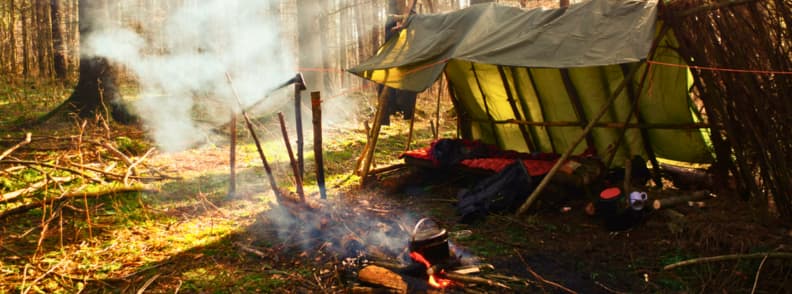Going into the wilderness can be thrilling, but preparing for the unexpected is important. Knowing essential wilderness survival skills is like having a secret weapon that gives you security. Plenty of survival skills exist, but let’s focus on the nine essential skills every adventurer should have.
We’ll provide a brief overview; however, keep in mind that this article won’t delve into all the specifics required for each category.
Now, let’s start with the most vital tool you possess — your brain. The foundation of survival truly lies within your mindset. Remember, the golden rule is never to let panic take control. Trust your instincts and familiarize yourself with these nine essential survival skills to be ready for wilderness self-reliance.
Essential skills for wilderness survival
It is important to equip yourself with the essential skills to help you survive and thrive in the wilderness. Let’s delve deeper to understand these survival skills better.
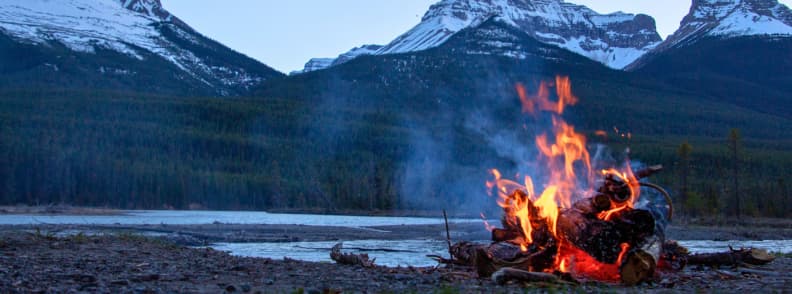
1. Building a fire
Building a fire is an essential skill for multiple purposes in the wilderness. You can use it to prepare food, remain warm during cold weather, and drink clean water. You’ll need matches or lighters, kindling, firewood, and fuel to start a fire. Pine needles, small tree branches, and pinecones make excellent fire starters. It’s important to have a fire extinguisher nearby for safety. Make sure to carefully watch the fire you start and make sure it doesn’t become uncontrollable.
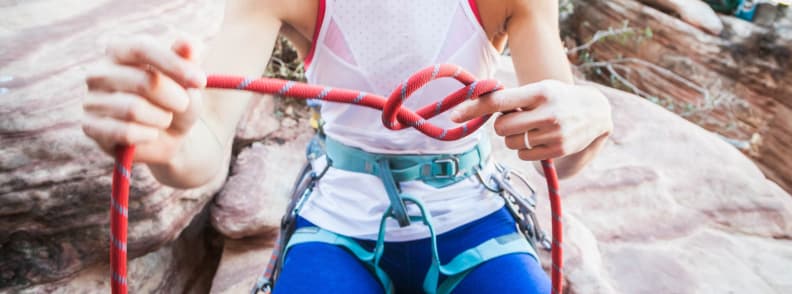
2. Knot-tying
The ability to tie knots, a skill often underestimated, can significantly enhance your survival chances in the wilderness. This skill helps you to build shelters, set up snares for trapping food, and create tools from available resources. Although it takes time and practice to become a pro at secure knots, the effort is well worth it. Get a rope and become comfortable with common knots, which include the square knot, clove hitch, and bowline. You can use these adaptable knots in many different kinds of outdoor situations.
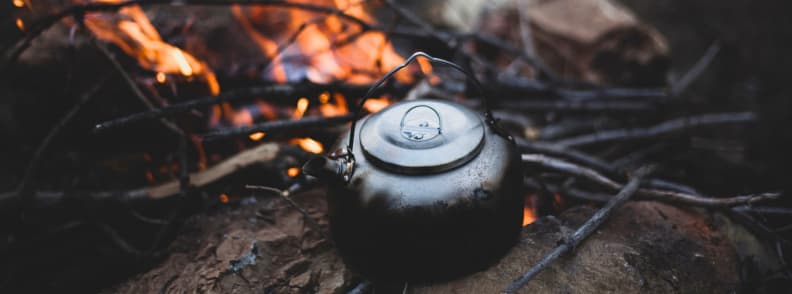
3. Water purification
Water sources in the wild often nurture harmful viruses and pathogens, which can lead to waterborne illnesses. That’s why purifying water is key to staying hydrated and ensuring survival. Before consuming any water found in the wilderness, it’s essential to filter it to remove any debris that may cause health issues. You can use portable water filters or purifying tablets to make sure your water is safe.

4. Searching for food
Believe it or not, nature offers a surprising abundance of edible plants in your backyard or the surrounding areas. In a survival situation, these plants can provide nutrients and serve as a low-impact energy source.
Toxic species frequently mimic non-toxic ones, making distinguishing between them and food plants difficult. Fortunately, there are a few tasty plants that are simple to identify that you may include in your exploring adventures without risk. Stinging nettle, dandelion, lamb’s quarters, and miner’s lettuce are a few examples. It’s best to avoid searching for mushrooms and fungi if you’re a beginner because many kinds are dangerous. Consult a local botanical reference and practice in your own backyard.
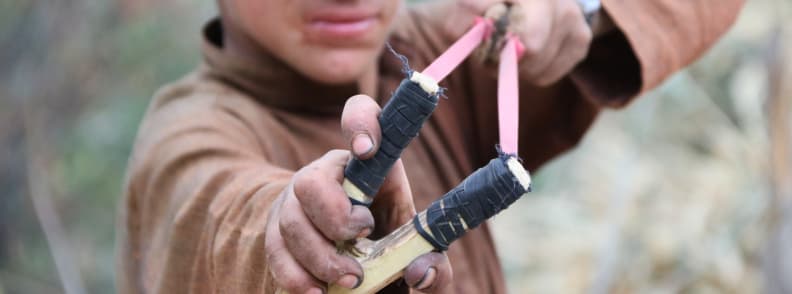
5. Making a weapon
Envision being in the wilderness, miles away from civilization, with no means to protect yourself from potential threats. Sounds terrifying, right? Fear not, though! The Slingshot is a simple and overlooked tool you can easily create from basic materials.
To make a slingshot, all you need is a forked stick, rubber tubing, and a piece of leather or canvas for the pouch. It is amazing what you can find around your home that can be repurposed for survival!
Once you’ve constructed your slingshot, take some time to practice aiming and shooting. Set up targets around your yard, but keep in mind to prioritize safety. Wear eye protection and make sure no one is within your line of sight as you release your ammo. Safety first!
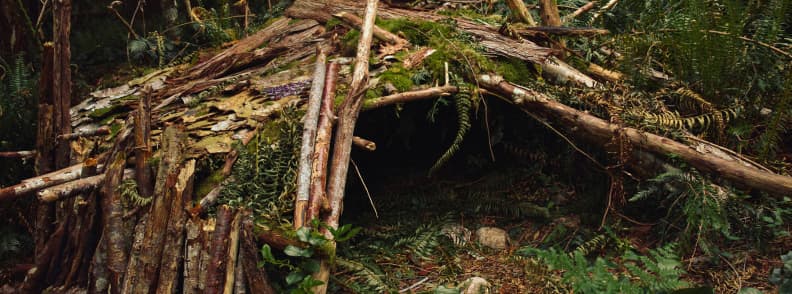
6. Shelter construction
In the wilderness, shelter is your key defense against the elements. You are shielded from harmful sunlight, freezing temperatures, wind, rain, and snow. Your body temperature must remain constant; anything that alters it could become your enemy.
Put on appropriate outfits for the environment to start. Wearing multiple thick layers of clothes gives more insulation than wearing just one. Remember to keep the layer closest to your body dry, as moisture can quickly sap away your body heat.
Knowing how to create a shelter is essential if nature hasn’t already provided one for you. Practice constructing a quick lean-to shelter before you actually need it. You never know when you might get separated from your campsite. Consider carrying a space blanket with you. You can wrap yourself in it to trap your body’s heat or use it to keep dampness away. Your chances of remaining warm and protected will increase as your level of preparation increases.
7. Packing
Strategic packing is essential when embarking on an extended wilderness adventure. Balancing the need for crucial survival equipment with a lightweight backpack could be a lifesaver.
Put together a survival kit with essentials like a compass (or map), sleeping bag, water filter, knife, fire starter, first aid kit, water filtration system, and purification pills like iodine. These supplies cover the necessities and greatly increase your chances of surviving.
It’s a good idea to carry a phone with you so you may call for assistance if necessary. Do not, however, completely rely on cell service for your safety in distant regions, as it may be constrained or nonexistent.
Consider the most essential items while packing and anticipate any unique challenges you might encounter. Take into account the weather, the distance you’re traveling, and the environment you’ll be in. Ensure you bring the right clothes, food, water, and any specialist equipment.
Try making your tools as light and compact as you can. In this manner, it won’t be cumbersome and won’t cause you to hike more slowly. You won’t have to carry any extra weight you don’t need when exploring.
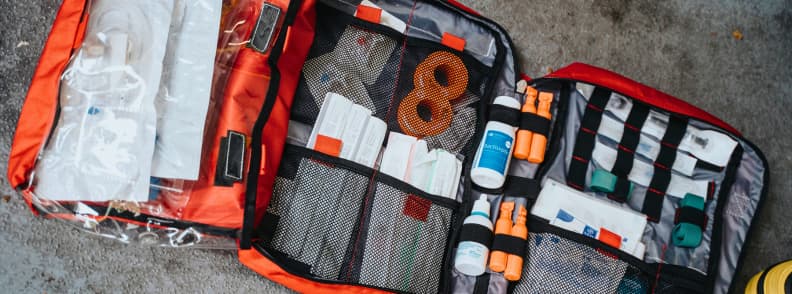
8. Basic first aid
First aid is more than just wound care; it is a survival skill in and of itself. It’s imperative to remain composed and collected when faced with a challenging circumstance. Panic only worsens the situation.
Remember the acronym STOP: Sit, Think, Observe, and Plan. This simple reminder helps you maintain a clear mindset when lost or stranded. Ensuring your brain works properly is the most important thing for staying safe in emergencies.
Before going on any trip, think about what medical supplies you might need and list them. Always carry a small, customized first aid kit with you that is suited to your needs. Minor scrapes, bruises, and the need for personal treatment are what most survival circumstances include. Know the contents of your equipment and how to use it well.
Given the need for preparedness, aim to pack as lightly as possible. Bring the items you believe you’ll need for the vacation. By using a space blanket, you can prevent hypothermia. Consider carrying a picture of your loved ones in your pack as well. It might inspire you to endure and remind you to keep cool.

Undertaking any extensive wilderness journey necessitates proficiency in technology-free navigation. Knowing how to get back to camp can make all the difference. You can employ other methods in a pinch, though a compass and map combination is the most accurate.
You can use an analog wristwatch to get a general sense of direction, and you can also use static electricity and the sun’s location as extra compass points. Your confidence will increase, and you’ll become a more independent outdoor explorer as you learn more about various navigational methods.
Key takeaway for wilderness self reliance
Mastering these essential skills will increase your chances of surviving and thriving in the wilderness. These skills empower you to adapt, overcome challenges, and maximize your outdoor experiences.
Remember, perfection comes with practice. Don’t wait until an emergency arises to put these skills into action. Continually refine and expand your knowledge. Don’t hesitate to seek guidance from experts or take wilderness survival courses.
Now, venture forth with confidence and immerse yourself in the wonders of the wilderness. Stay vigilant, remain prepared, and relish the extraordinary journey that nature promises!

Daniel Martin has had hands-on experience in digital marketing since 2007. He has been building teams and coaching others to foster innovation and solve real-time problems. Dan also enjoys photography and traveling.
You too can become a guest blogger on The Travel Bunny. Submit a free guest post!
After learning these basic wilderness survival skills, check out these travel blog posts
8 fantastic camping meal ideas for a large crowd
Best camping places in the US – camping is always a good idea!
Hiking trip essentials for stress-free travel

